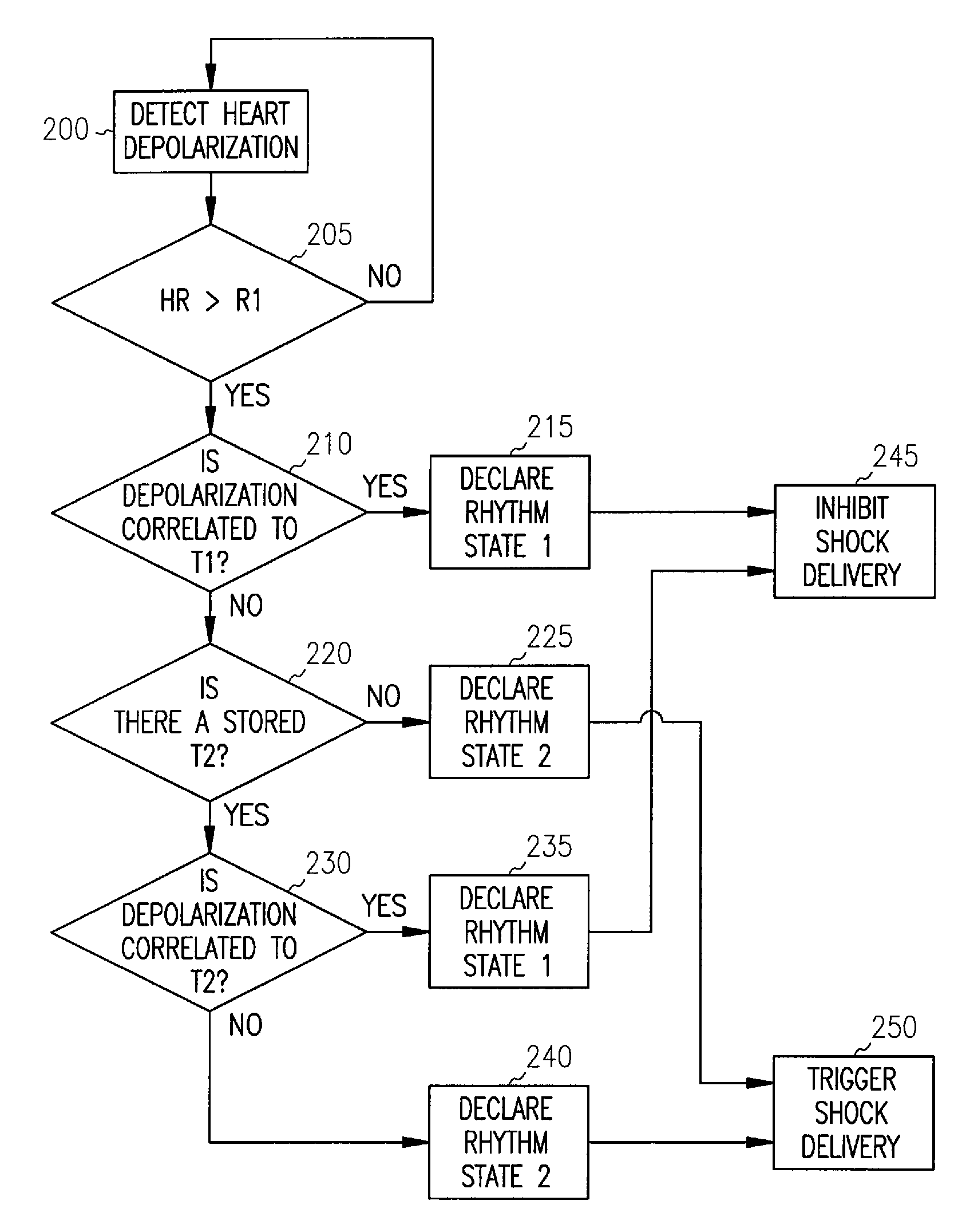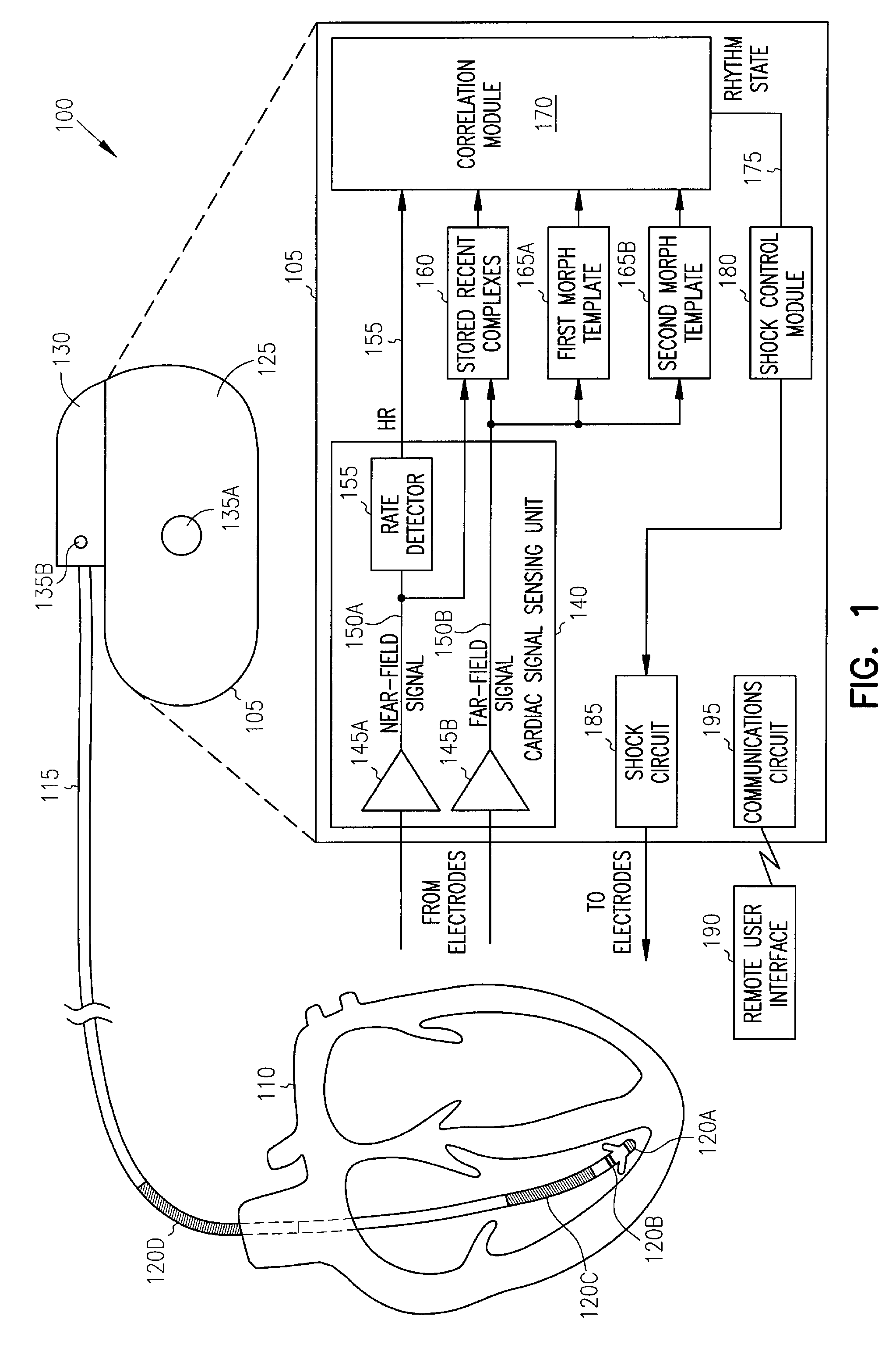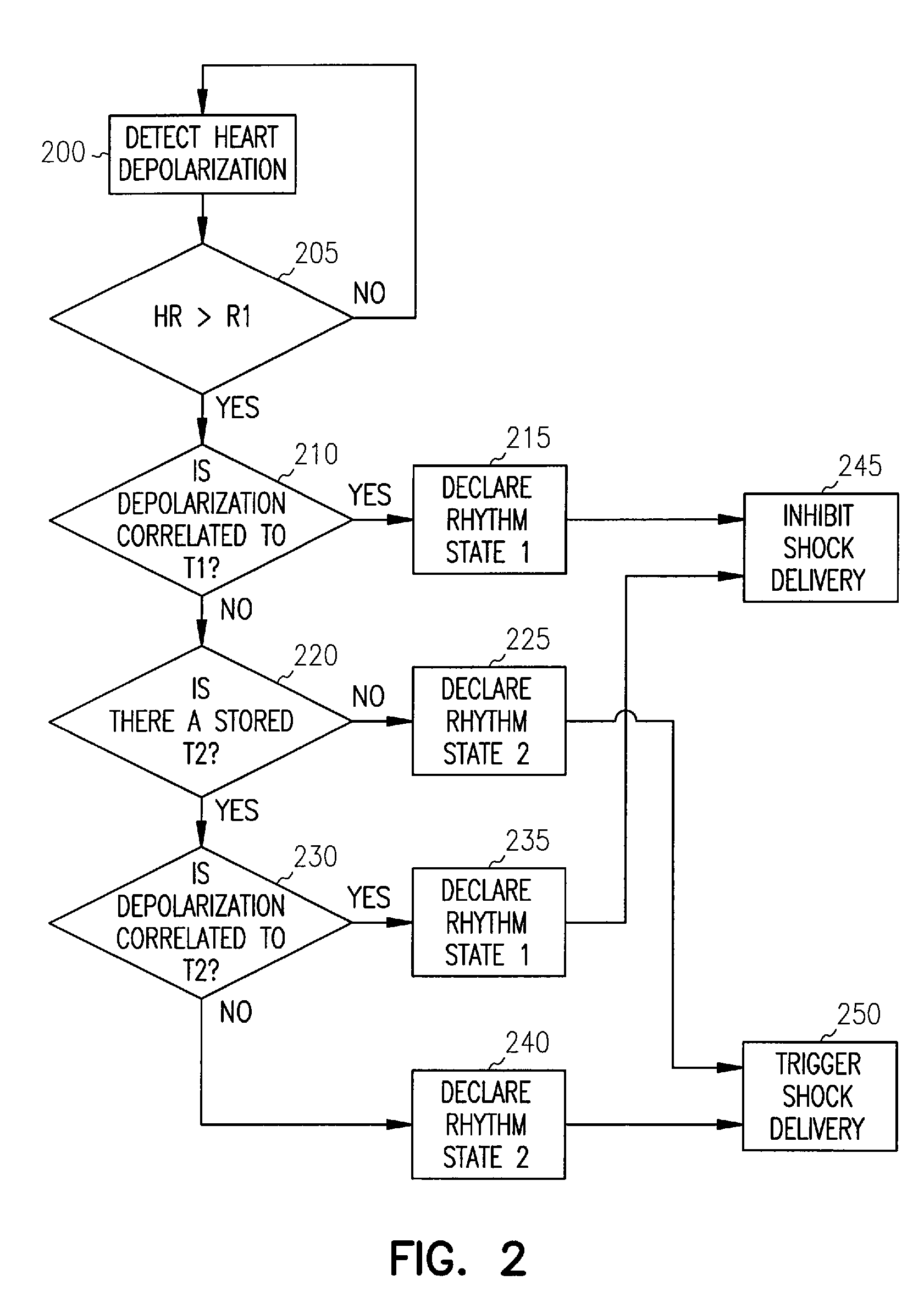Cardiac rhythm management systems and methods using multiple morphology templates for discriminating between rhythms
- Summary
- Abstract
- Description
- Claims
- Application Information
AI Technical Summary
Problems solved by technology
Method used
Image
Examples
example 1
[0033]In a first example, first morphological template T1 corresponds to normal sinus rhythm obtained from a subject's heart 110 while the subject is resting or relatively inactive—and no tachyarrhythmia is present. Second morphological template T2 corresponds to normal sinus rhythm obtained from the subject's heart 110 while the subject is exercising or relatively active—and no ventricular tachyarrhythmia (VT) is present. For example, for acquiring and storing T2, the subject can be placed on a treadmill and an appropriate template depolarization complex acquired. In this example, a physician independently verifies (e.g., using a surface ECG and / or electrogram signals) that no VT was present during acquisition of T2. As an alternative to placing the subject on the treadmill, the physician may program device 105 to deliver atrial pacing pulses at a high rate, e.g., using an atrial leadwire; again, a physician verifies that no VT was present during this acquisition of T2.
[0034]In thi...
example 2
[0035]In a second example, first morphological template T1 corresponds to normal sinus rhythm obtained from a subject's heart 110 while the subject is resting or relatively inactive, and no tachyarrhythmia is present. Second morphological template T2 corresponds to supraventricular tachyarrhythmia (SVT) rhythm obtained from the subject's heart 110 while no accompanying ventricular tachyarrhythmia (VT) is present. In one example, such an SVT may be induced by a physician in an electrophysiology (EP) lab; the physician independently verifies (e.g., using a surface ECG and / or electrogram signals) that no VT was present during acquisition of T2 during the SVT. In another example, such SVT template data is obtained from historical electrogram data obtained from the subject and stored by device 105; the physician independently verifies (e.g., using the stored electrogram signals) that no VT was present during acquisition of T2 during the stored SVT episode. Then, as discussed above with r...
example 3
[0036]In a third example, as illustrated in the flow chart of FIG. 4, the heart rate is compared to more than one threshold. In the example of FIG. 4, if the heart rate exceeds a first threshold R1 at 205, it is then compared at 400 to a second (higher) rate threshold R2 (for an illustrative example, R2=165 beats per minute). If, at 400, HR>R2, then, at 405, VT is declared. An antitachyarrhythmia shock is then triggered at 250. Otherwise if, at 400, R2>HR>R1, the process flow continues at 210 as discussed above with respect to FIGS. 2 and 3. In the example of FIG. 4, therefore, an extremely high detected rate triggers a declaration of VT and bypasses any comparison of a morphology of a detected depolarization complex to multiple morphological templates.
PUM
 Login to View More
Login to View More Abstract
Description
Claims
Application Information
 Login to View More
Login to View More - R&D
- Intellectual Property
- Life Sciences
- Materials
- Tech Scout
- Unparalleled Data Quality
- Higher Quality Content
- 60% Fewer Hallucinations
Browse by: Latest US Patents, China's latest patents, Technical Efficacy Thesaurus, Application Domain, Technology Topic, Popular Technical Reports.
© 2025 PatSnap. All rights reserved.Legal|Privacy policy|Modern Slavery Act Transparency Statement|Sitemap|About US| Contact US: help@patsnap.com



